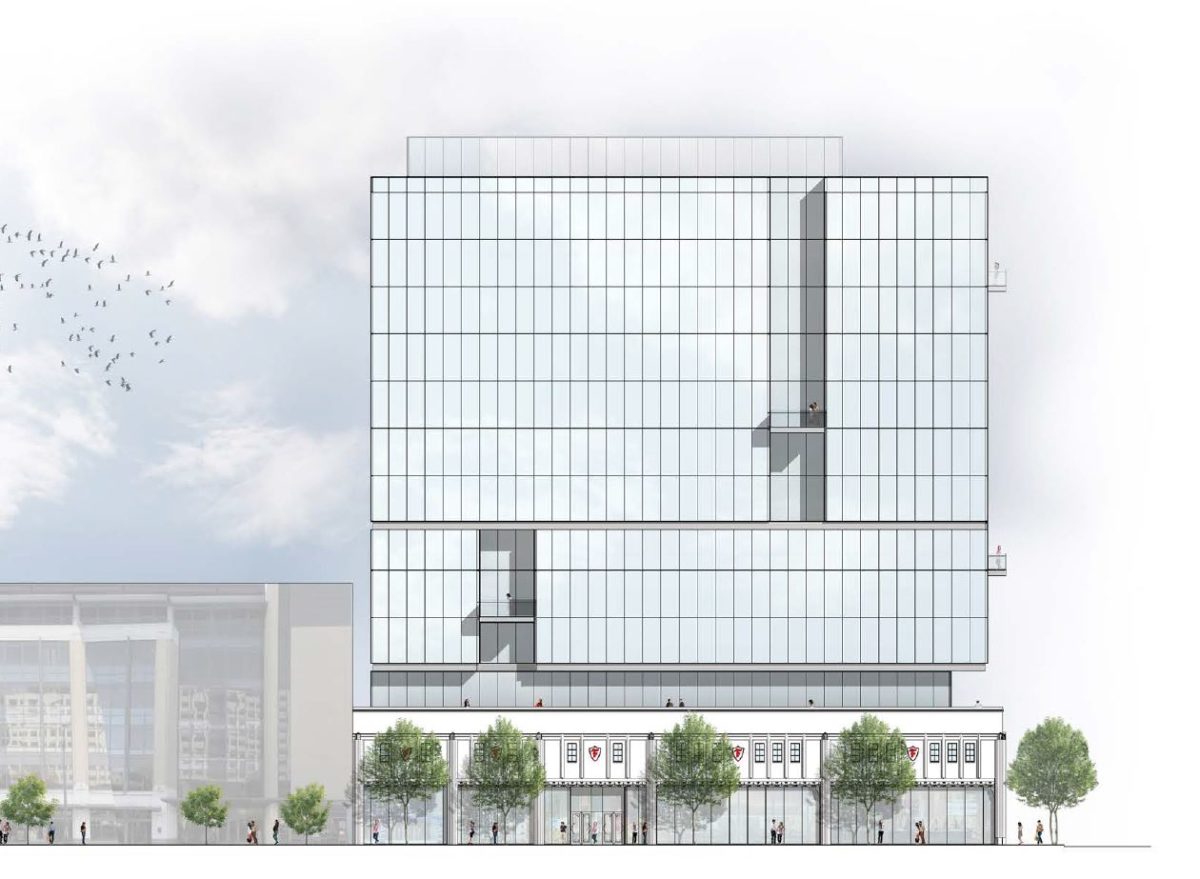The Firestone Building has stood on the corner of Westlake and Harrison since 1929. At nearly 100 years old, it’s got some stories to tell. As a highly-valued historic Seattle landmark nestled in the heart of South Lake Union, the façade of the building is being preserved as a new, super-green 16-story office building is being built within the existing structure, by Lewis and developer Martin Selig Real Estate.
From the street, the façade preservation at 400 Westlake looks fairly simple. Lewis installed a series of braces along each face, creating a supportive triangle between the upper façade, lower façade, and a temporary footing in the ground. These braces support the façade until the new structure is permanently attached to the existing one, and to the naked eye, each brace looks identical to the next.
However, the Firestone building is approaching the century mark and is beginning to show its age. The façade isn’t perfectly flat or straight anymore, and unexpected obstructions within each wall made it impossible to pinpoint the exact mounting point of each brace. So, that perfectly regular, identical set of braces you’re looking at from the street? Each one is completely unique and custom-fit to that spot.
To achieve that level of customization, the 400 Westlake project team was faced with weeks and weeks of field-modifying each brace to fit in place. Fortunately, our Virtual Design and Construction (VDC) and Lewis Survey teams had an idea: if they could supply exact measurements, the steel fabricator could custom-fabricate each brace for its specific location. The project team could then focus on securing the façade, instead of modifying the braces.
And that’s where the point cloud scan comes in. By using laser scanning equipment that paints every surface within its view with thousands of points of spatial data, the survey team created a point cloud model of the old façade. Then, Lewis VDC (Jake Boyd) integrated that point cloud data with a detailed Revit model of the structure to be installed based on the engineers design. With the aid of the point cloud and the Revit model, the team specified the exact length and mounting angle of each brace member, virtually eliminating the need to field-modify the steel members.
The result? The beams arrived on a truck, were lifted into place and welded on…no modification necessary. Thanks to proper planning, the team saved over five weeks on the project.

